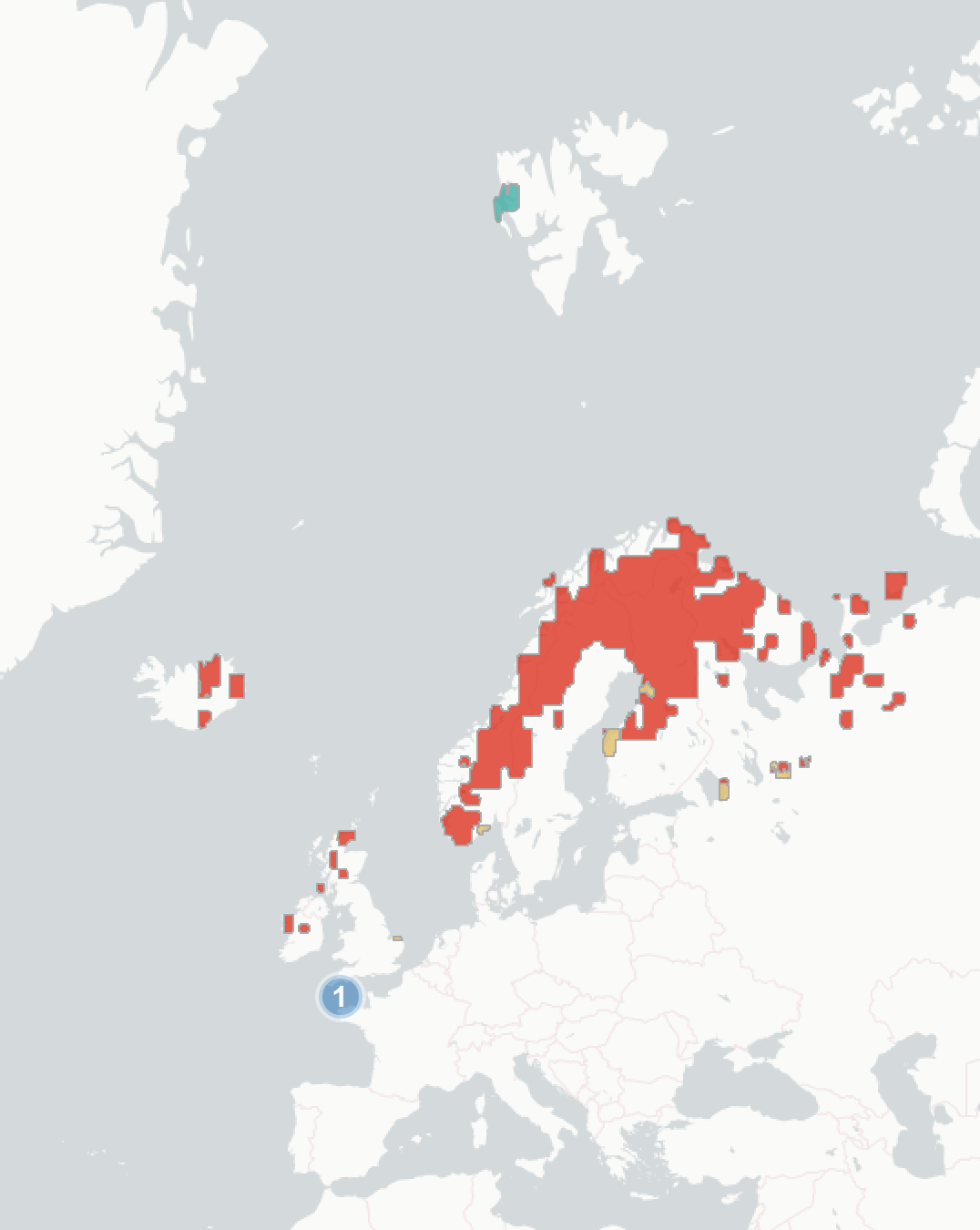Common Scoter (Melanitta nigra): vulnerability to climate change
Evidence for exposure
Potential changes in breeding habitat suitability:
-
Current breeding area that is likely to become less suitable (94% of current range)
-
Current breeding area that is likely to remain suitable (5%)
-
Current breeding area that is likely to become more suitable (1%)
Current impacts to Common Scoters attributed to climate change:
-
Neutral Impact: Wintering populations have redistributed, most likely due to lack of prey caused at least partly by climate change.
Predicted changes in key prey species:
No key prey species are predicted to decline for this species.
Climate change impacts outside of Europe
-
Climate change has contributed to declines of scoter populations in North America. Earlier spring snow melt has likely led to a trophic mismatch and lower breeding success in scoters.
Sensitivity
-
There is some evidence that populations in the Baltic have declined substantially, but these are unsubstantiated and may instead indicate population shifts to the North Sea. If the species is indeed declining, climate change is likely to exacerbate these declines
-
Many populations of common scoters rely on several key mollusc species for much of the year, many of which are known to be sensitive to climate change. Warmer conditions and ocean acidification are likely to result in reduction of key prey species.
-
Scoters have shown declines during historical regime shifts in marine ecosystems, they are likely sensitive to future changes in marine ecosystems.
-
Key wetland breeding habitats across the Arctic are rapidly disappearing or changing. The overall impact on scoter populations is unknown, but very likely to be significant.
-
Often nests on low lying areas near water, sensitive to flooding due to increased rainfall or wave-action. Any increase in intensity or frequency of storms is likely to impact breeding populations
-
There are records of common scoters in recent wrecks along the coast of the UK. The extent and severity of these wrecks is unknown, but may suggest that common scoters are vulnerable to extreme climate events, and may be significantly impacted by more frequent, or more extreme, storms.
-
Recent observations and anecdotal reports have reported large groups of non-breeding scoters in the Baltic, many of which may in poor condition. This may indicate high levels of stress, and, as it was not observed previously, may be a result of climate change. Further research is needed to clarify the cause of this and the long-term impact on the species.
Adaptive capacity
-
If suitable habitat is available, common scoters have on occasion either temporarily or permanently colonised new areas. However in general they have high site fidelity and are unlikely to shift breeding areas quickly in response to climate change
-
There is some evidence the wintering population in the Baltic is redistributing to the North Sea. However the extent of this shift is uncertain and the cause is unknown.
-
Very varied diet which varies by population and by year. Most likely to be determined by prey abundance. The loss of one or a few prey species is unlikely to have a signficant impact.
